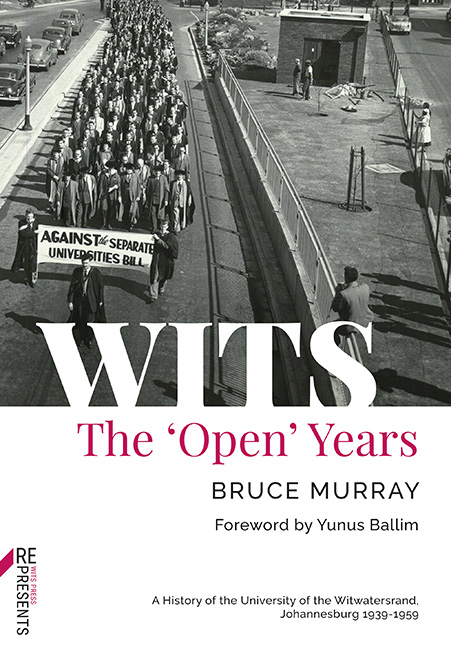1 - Wits at War
Published online by Cambridge University Press: 24 November 2023
Summary
The Second World War began as a European war in September 1939 and ended six years later in the Far East with the Japanese surrender to the United States. In the history of the University of the Witwatersrand, as in much other history, the war was a watershed. The University became far more ‘open’ in its admissions policy as blacks secured access to the Medical School; war-orientated research, notably in radar, gave a new importance to the University as a centre of research; the war significantly heightened student political awareness and marked the beginnings of student activism; and the enrolment of thousands of ex-volunteers – ex-servicemen and -women – at the end of the war helped to make the University a distinctly more adult institution. There were major transformations in the wider society, and these were to have a significant impact on the University’s development. South Africa’s participation in World War II greatly affected economic, social and political life.
Economically, South Africa, and especially Johannesburg and the Witwatersrand, boomed as a consequence of the war. In the six years prior to the war a process of economic restructuring had begun, with secondary industry embarking on major expansion. Under war conditions, in which the country sought to produce armaments and local substitutes for imports, manufacturing surged as the most dynamic sector in the economy. Between 1939 and 1945 the gross value of industrial output more than doubled, from £141 (R282) million to £304 million, enabling manufacturing to surpass mining in its contribution to South Africa’s Gross Domestic Product. The Gross National Product grew by almost 70 per cent, a rate higher than that attained by the United States. The most dramatic growth was in the Pretoria-Witwatersrand-Vereeniging complex, now the province of Gauteng, which by 1945 was producing almost half the country’s industrial output. The importance of Johannesburg, the focus of the country’s railway network, as a centre for the commercial distribution of goods for southern Africa as a whole, grew correspondingly.
The wartime industrial growth hastened the movement of peoples, particularly blacks, from the countryside to the towns.
- Type
- Chapter
- Information
- WITSThe 'Open' Years, pp. 1 - 26Publisher: Wits University PressPrint publication year: 2022

